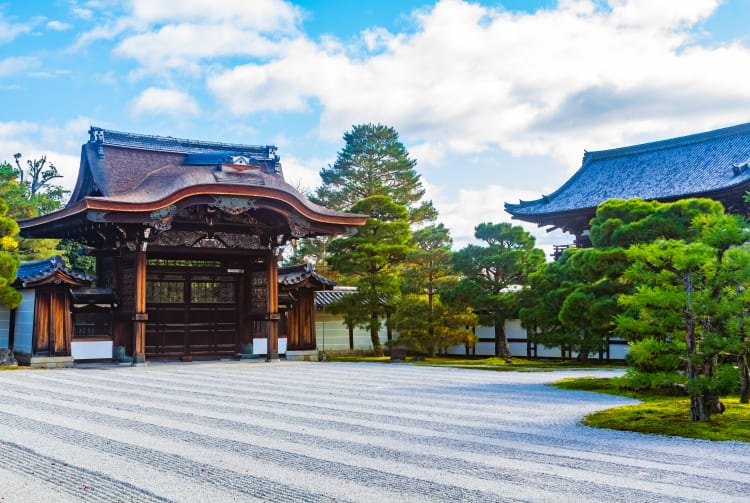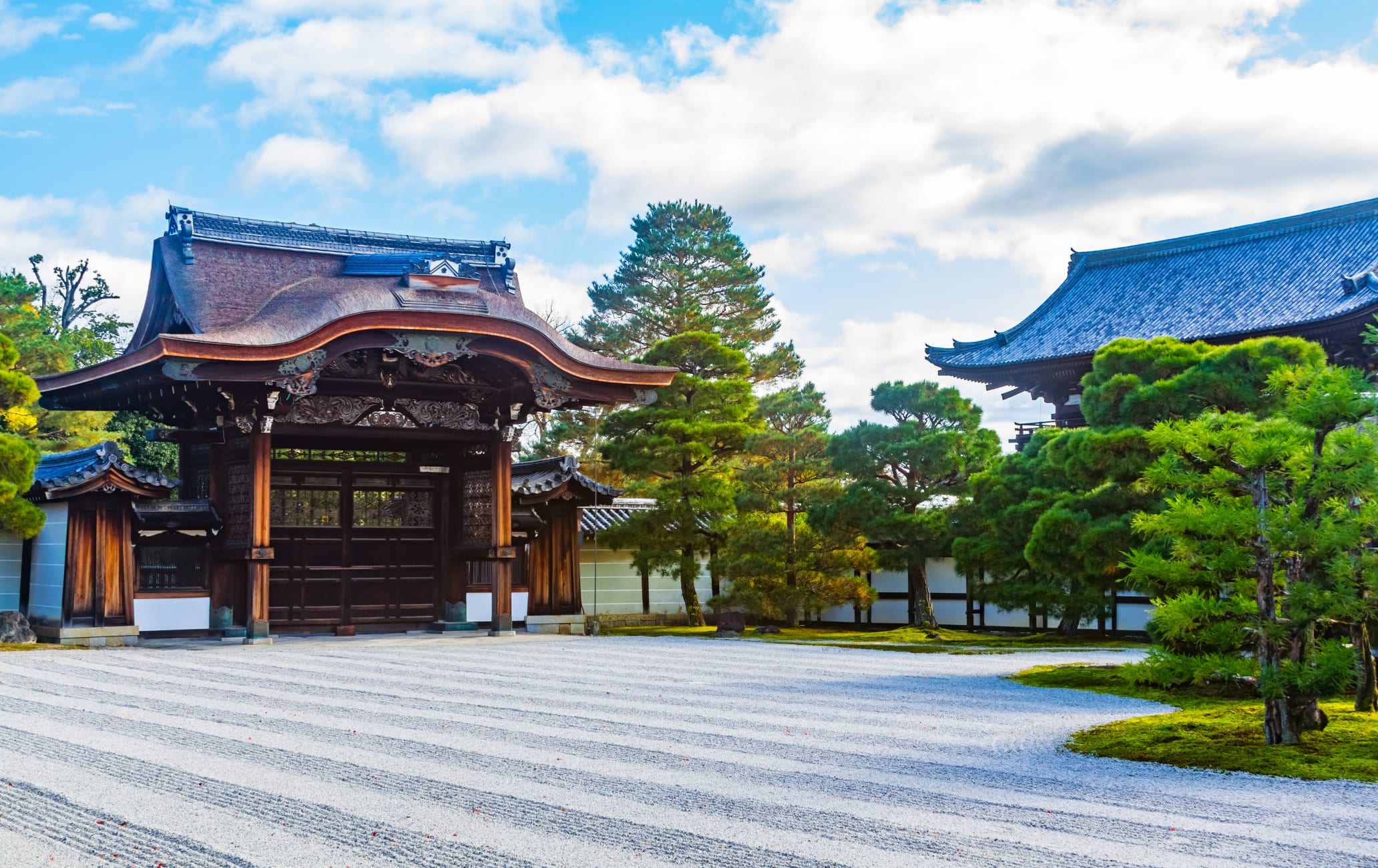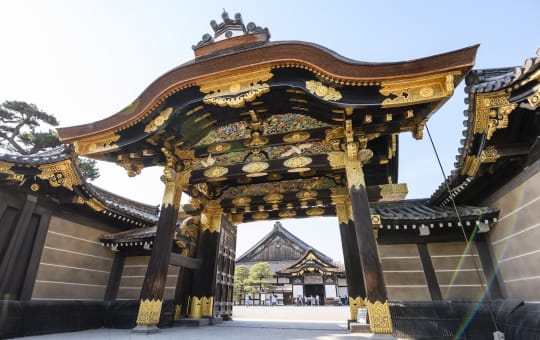Un templo tranquilo y agradable con muchas sorpresas en su interior
El templo Ninna-ji fue construido en el 888 e. c. y es patrimonio de la humanidad. En él nació el emperador Uda, y más tarde vivió siendo el primer sacerdote jefe del templo. Ninna-ji es conocido como templo monzeki, palabra que hace referencia a los sacerdotes budistas de linaje aristocrático o imperial y a los templos en los que vivían. Además, Ninna-ji es el templo principal de la escuela Omuro del budismo Shingo.
No te pierdas
- Los cerezos omuro-zakura, una variedad que es la última en florecer en Kioto
- Los 88 lugares sagrados de Joju-san Omuro situados en los terrenos montañosos detrás del templo, una versión en miniatura de la peregrinación de los 88 templos de Shikoku
Datos breves
La mayoría de los sacerdotes principales pertenecían a la familia imperial, y la residencia del sacerdote principal se llamaba palacio (Omuro)
En la actualidad, el Omuro se refiere al Shinden, al Kuroshoin y al Shiroshoin
Cómo llegar
Se puede llegar al templo Ninna-ji en tren.
Ninna-ji está a unos minutos a pie de la estación de Omuro-Ninnaji, en la línea Keifuku Kitano. El templo se encuentra a 10 minutos a pie al oeste del templo Ryoanji.
Una historia turbulenta
La mayor parte del templo Ninnaji fue destruido tras un incendio en la Guerra de Onin del siglo XV. Su reconstrucción coincidió con la del Palacio Imperial a principios del siglo XVII, recibiendo así financiación del imperio, lo que permitió trasladar hasta el lugar muchos de los edificios de los terrenos palaciegos. Los edificios del templo Ninna-ji fueron incendiados en el año 1468 durante la Guerra de Onin, pero fueron reconstruidos a principios del siglo XVII con la ayuda del Shogunato Tokugawa. Se trasladaron varios edificios a Ninna-ji desde el Palacio Imperial, que también estaba siendo reconstruido en aquella época. Las obras del templo se completaron en 1646.
Entre los edificios del Ninna-ji está Kondo, Tesoro Nacional, y Miedo, Bien de Interés Cultural, así como Niomon (una puerta con estatuas budistas a cada lado) y una pagoda de cinco plantas.
Una miríada de productos culturales
El museo Reihokan alberga numerosos bienes culturales, como esculturas, pinturas y documentos antiguos. La imagen principal que data de la época de la fundación del templo, una tríada de Amitabha, también se encuentra en este museo. Las oraciones que se realizan en el templo Ninna-ji se dedican al Buda Amitabha y a los dos bodhisattva que lo acompañan.














































